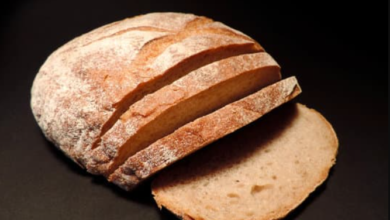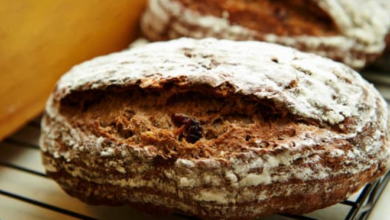Why is Rye Bread So Expensive? The Truth Will Shock You!

What To Know
- This scarcity drives up the price of rye grain, which in turn affects the cost of rye flour and bread.
- However, the distinctive flavor, nutritional value, and niche appeal of rye bread make it a worthwhile investment for those who appreciate its culinary and health benefits.
- Rye bread can be enjoyed as a sandwich bread, toasted with butter or jam, or used as a base for open-faced sandwiches and canapés.
In the culinary realm, rye bread stands out as a delectable and nutritious staple. However, its price tag often raises eyebrows, leaving many to ponder, “Why is rye bread expensive?” This blog post delves into the intricate factors that contribute to the higher cost of rye bread, shedding light on the reasons behind its premium price.
The Costly Cultivation of Rye
Unlike wheat, rye is a hardier grain that can withstand harsh climates. However, its cultivation requires more labor and resources. Farmers must meticulously prepare the soil, sow the seeds, and nurture the crop throughout its growing season. The harvesting process is also more labor-intensive, as rye stalks are not easily separated from the grain.
The Unique Milling Process
Rye flour production is a specialized process that further drives up costs. Rye kernels have a high pentosan content, which makes them difficult to mill into fine flour. Specialized mills are required to break down the kernels into the desired consistency, resulting in lower flour yield and increased production costs.
The Time-Consuming Fermentation
Rye bread requires a longer fermentation time compared to other types of bread. This extended fermentation period allows the dough to develop its characteristic flavor and texture. However, it also means that rye bread takes longer to produce, tying up resources and increasing labor costs.
The Scarcity of Rye Grain
Rye is a less common grain than wheat, accounting for only a small percentage of global grain production. This scarcity drives up the price of rye grain, which in turn affects the cost of rye flour and bread.
The Niche Market
Rye bread has a smaller market share than wheat bread, which means that it is not produced in the same quantities. This limited production contributes to its higher price, as producers must cover their fixed costs over a smaller volume of sales.
The Premium Ingredients
Rye bread often contains additional premium ingredients, such as seeds, nuts, and spices. These ingredients add nutritional value and flavor to the bread, but they also increase its production costs.
The Health Benefits
Rye bread is widely recognized for its health benefits, including its high fiber content, which supports digestive health. It also contains antioxidants and nutrients that may reduce the risk of chronic diseases. The perceived health benefits of rye bread can contribute to its higher price.
Summary: The Value of Rye Bread
While rye bread may come at a premium, it is worth considering its unique characteristics and potential health benefits. The time and effort involved in its cultivation, milling, and fermentation contribute to its higher cost. However, the distinctive flavor, nutritional value, and niche appeal of rye bread make it a worthwhile investment for those who appreciate its culinary and health benefits.
Frequently Asked Questions
1. Is rye bread healthier than other types of bread?
Yes, rye bread is generally considered healthier than other types of bread due to its higher fiber content and presence of antioxidants and nutrients.
2. Why is rye bread so dense?
Rye flour has a higher protein and pentosan content than wheat flour, which gives rye bread its dense and chewy texture.
3. Can I substitute rye flour for wheat flour in all bread recipes?
No, rye flour has different properties than wheat flour and cannot be directly substituted in all bread recipes. It is recommended to follow recipes specifically designed for rye bread.
4. How can I store rye bread to keep it fresh?
Store rye bread in an airtight container at room temperature for up to 3 days. For longer storage, wrap it tightly in plastic wrap and freeze it for up to 2 months.
5. What are some popular ways to enjoy rye bread?
Rye bread can be enjoyed as a sandwich bread, toasted with butter or jam, or used as a base for open-faced sandwiches and canapés.

